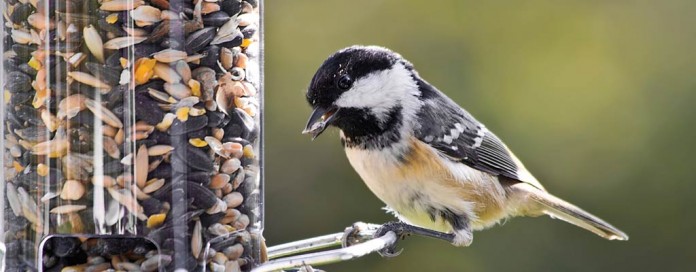With springtime approaching, it’s time to start thinking about your backyard (or front yard). That’s right — spring is only one month away. Don’t worry, you still have plenty of time to get started.
Ohio possesses a variety of beautiful resources and landscapes, including wildlife. However, we are not immune here to the destruction of available habitat and resources for said wildlife.
Habitat destruction is the number one threat faced by wildlife. More lands are being developed to promote future urban spaces and structures to meet human population growth.
Helping wildlife
This article is here to help those who are interested in providing habitat for wildlife (specifically birds) on your property, or for those who just want to watch/observe local wildlife from the porch.
It is key to keep in mind before getting started that depending on the habitat you plan to provide, you may also attract other wildlife you don’t want around that could wreak havoc on your landscape or endanger other wildlife.
Attracting smaller mammals and birds might also attract coyotes, foxes, feral cats and other predators. Deer, opossums, raccoons and other wildlife can be beneficial but also can become a nuisance.
Make sure to keep trash covered, protect any fruits/vegetables you may be growing with fencing or by other means, use organic pesticides and herbicides, and if you have outdoor feeding stations for any animals, make sure only those specific animals can get to them/have access.
Birds
While some may think all birds require the same food sources and habitats, this is just not true. Whereas hummingbirds feed on nectar and insects, blue jays prefer seed and nut-producing trees.
Not all birds migrate, so providing bird feeders as supplemental food sources during the winter can not only attract them to your backyard but can also help them out when their usual food sources are not as readily available due to winter conditions.
Providing flowering plants is a great way to attract a multitude of birds to your property but can also attract other pollinators and small herbivores/omnivores. Make sure not to cut them down before winter so the seed source will still be available. If you’re looking to attract hummingbirds, bee balms, blazing stars and cardinal flowers are a couple of their preferred food sources.
Planting shrubs and low-growing trees that produce berries is another multi-beneficial food source that can be utilized by a variety of species. Sumacs are winter-producing and are a helpful food source to non-migratory birds, as well as a habitat source.
Planting/growing plants, trees, shrubs, etc. that are beneficial in more than one way to more than one species is one way to make the most of your landscape if space is limited.
Bird feeders
Now to get back to bird feeders; if you’re looking to attract a specific type of bird(s), do your research and figure out what seed or seed mixtures they prefer and provide the food source that is best suited for them.
Some species of birds prefer feeding from ground level (doves, cardinals, etc.) and in that instance, ground-level feeders can be implemented. Be sure to take preventative measures to ensure pests can’t access those feeders.
Hummingbird feeders should be comprised of four parts water and one part pure-white granulated sugar. Before filling the feeder, boil the mixture for a few minutes and then allow it to cool. These feeders should be cleaned twice a week.
No matter what type of feeder you use, be sure to stay on top of the upkeep, cleaning and maintenance of feeders to prevent the spread of potential diseases and bacteria.
Keep a log
Try keeping a log or observation sheet of the different species of birds and other animals you see in and around your yard. There are several websites where you can share and learn about wildlife sightings in your area and all over the world.
One I find very helpful and useful is www.inaturalist.org. There are guides, taxa information, journal posts, discussion forums and interactive maps. It’s a great tool if you don’t have your observation log with you, and you can download the application on any device, take a picture and come back to it and log it later.
There are so many new and practical resources available. Reach out to the Master Gardener volunteers, soil and water districts or OSU Extension office in your county. They have schedules and information on upcoming programs and workshops covering many different topics.













